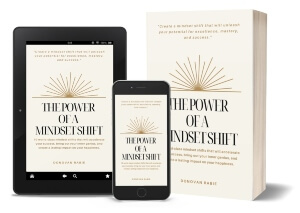In today’s competitive business landscape, effective coaching has become essential for individuals and organizations to achieve their goals and maximize their potential. Coaching models provide structured frameworks that guide the coaching process, enabling coaches and clients to navigate challenges and achieve desired outcomes. In this article, we will delve into the world of coaching models, conducting a comprehensive comparative analysis to shed light on their unique features, benefits, and limitations.
In This Article
ToggleUnderstanding Coaching Models
What Are Coaching Models?
Coaching models are systematic approaches that outline the various stages and components of the coaching process. They provide coaches with a roadmap to follow while working with their clients, ensuring a structured and goal-oriented approach. These models are designed to facilitate effective communication, goal setting, action planning, and evaluation.
The Importance of Coaching Models
Coaching models serve as valuable tools for both coaches and clients. They offer a common language and framework that promotes clarity, accountability, and progress. By utilizing coaching models, coaches can enhance their effectiveness and ensure a consistent and professional coaching experience for their clients.
Comparative Analysis of Coaching Models
In this section, we will explore and compare several popular coaching models, highlighting their key characteristics, advantages, and potential applications.
10 world-class mindset shifts that will…
~ Accelerate your success.
~ Bring out your inner genius.
~ Create a lasting impact on your happiness.
Price From: $5.18
1. GROW Model
The GROW model, developed by Sir John Whitmore, is one of the most widely recognized coaching models. GROW stands for Goal, Reality, Options, and Will. This model emphasizes setting clear goals, understanding the current reality, exploring options, and defining a plan of action. It is particularly effective in goal-oriented coaching scenarios and provides a structured approach to problem-solving and decision-making.
2. OSKAR Model
The OSKAR model, created by Mark McKergow and Paul Z. Jackson, focuses on solution-focused coaching. OSKAR stands for Outcome, Scaling, Know-how and Resources, Affirm and Action, and Review. This model encourages clients to envision their desired outcome, explore their existing resources and strengths, and take action towards achieving their goals. The OSKAR model is known for its positive and empowering approach, fostering a solution-focused mindset.
3. CLEAR Model
The CLEAR model, developed by Peter Hawkins and Nick Smith, is a team coaching model that focuses on collective goals and performance. CLEAR stands for Contracting, Listening, Exploring, Action, and Review. This model is particularly relevant in organizational settings where team coaching is required. It emphasizes creating a clear coaching contract, active listening, exploring diverse perspectives, defining concrete actions, and reviewing progress.
4. TGROW Model
The TGROW model, an extension of the GROW model, incorporates an additional component of “T” for Topic. It was introduced by Graham Alexander as a way to enhance the clarity and focus of coaching conversations. The TGROW model includes the following stages: Topic, Goal, Reality, Options, and Will. By adding the Topic stage at the beginning, coaches can ensure a clear context for the coaching session and align it with the client’s overarching objectives.
5. Inner Game Model
The Inner Game model, developed by Timothy Gallwey, focuses on the inner psychological aspects of coaching. It emphasizes self-awareness, overcoming limiting beliefs, and developing a growth-oriented mindset. The model highlights the importance of creating a supportive and non-judgmental environment that enables clients to tap into their full potential.
Selecting the Right Coaching Model
Choosing the most suitable coaching model depends on various factors, including the context, goals, and preferences of the coach and the client. It is essential to consider the specific needs of the coaching relationship and align them with the strengths and limitations of each model. Some factors to consider when selecting a coaching model include:
- The nature of the coaching goals and objectives
- The client’s preferred learning style and mindset
- The coach’s expertise and familiarity with the model
- The level of structure and guidance required in the coaching process
- The organizational or team dynamics, if applicable
Conclusion
Coaching models serve as invaluable resources for coaches and clients alike, providing a roadmap for success and facilitating meaningful and impactful coaching experiences. In this article, we explored several popular coaching models, including the GROW, OSKAR, CLEAR, TGROW, and Inner Game models, highlighting their unique features and applications. By understanding the strengths and limitations of each model, coaches can choose the most appropriate approach to guide their clients towards achieving their goals.
Remember, when it comes to coaching, it is crucial to tailor the approach to the specific needs and preferences of the client. By leveraging the right coaching model, coaches can unlock the full potential of their clients, helping them surpass their limitations and achieve remarkable results.






